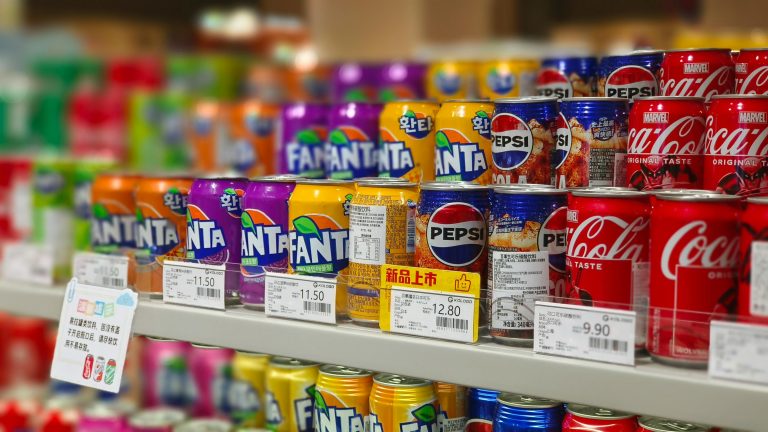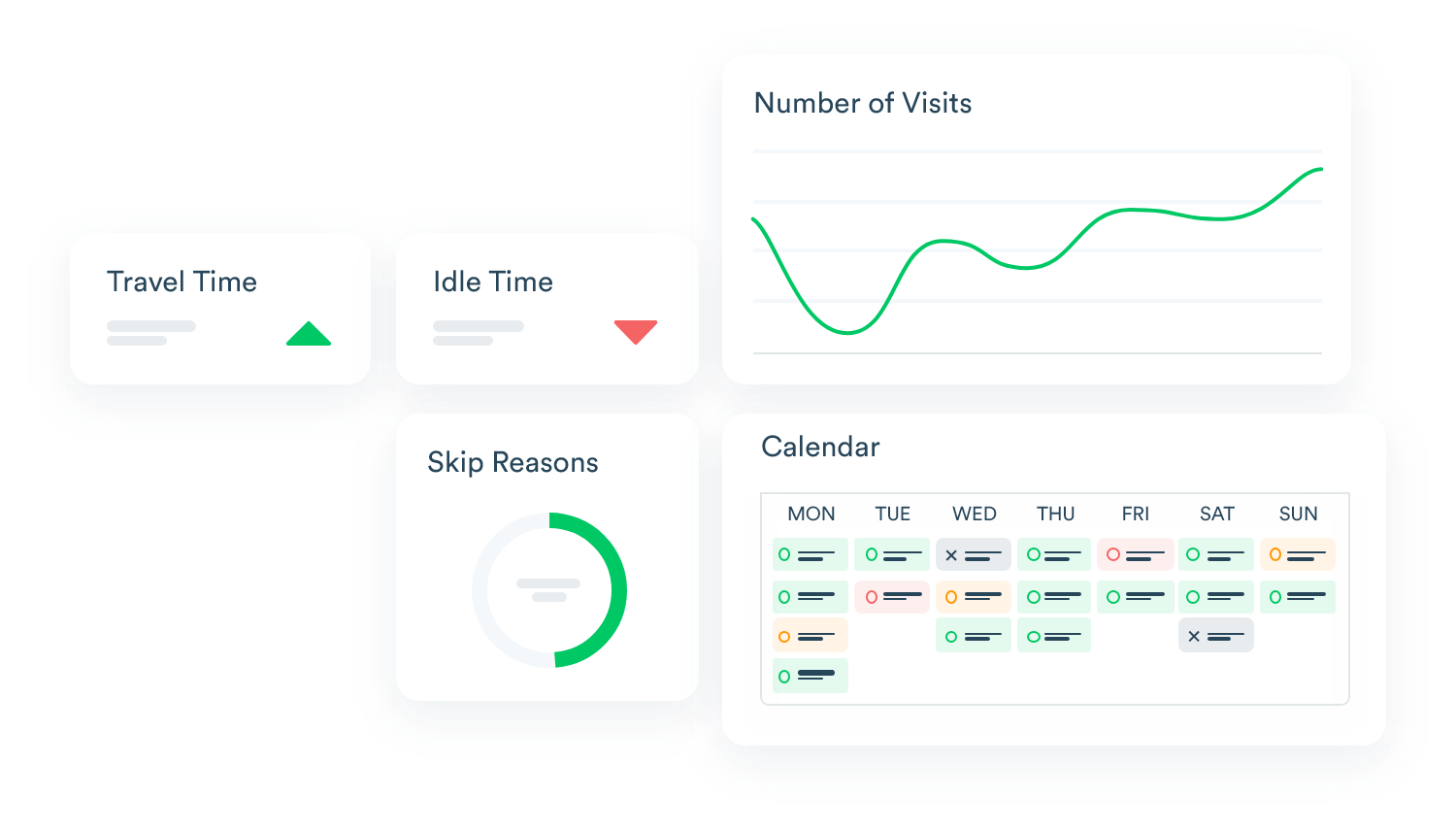Boosting Retail Sales: On-Shelf Availability Strategies
In today’s retail landscape, it is more important than ever for brands to ensure the availability of their products on store shelves. With increased competition and changing consumer preferences, brand managers and portfolio managers are under immense pressure to boost sales and maintain a strong presence in bricks-and-mortar stores. But how can you accurately measure your on-shelf availability and implement effective strategies to improve it?
A recent study claims that by addressing overstocking and understocking issues, businesses can achieve a significant 10% reduction in inventory costs. Another study shows that inventory mismanagements like shrinkage, stockouts, and overstock cost businesses worldwide an estimated $1.1 trillion.
In this blog post, we will discuss the various metrics and strategies that can help you boost your sales by improving on-shelf availability for your products. With our insights and recommendations, you’ll learn how to stay ahead of the game in maximizing shelf space utilization and ultimately driving more revenue for your business.
Introduction to On-Shelf Availability (OSA) and Its Impact on Sales
As a retail business owner or manager, you know that keeping your shelves stocked and organized is crucial to driving sales. On-shelf availability (OSA) is a crucial factor in driving sales for retail businesses. It refers to the percentage of products that are in stock and available to customers on shelves at any given time.
By conducting regular retail audits, you can identify which products are consistently out of stock or nearing expiration and take action to ensure that you always have enough inventory on hand. This not only ensures that you never miss out on a sale, but also helps you effectively manage expiration dates and reduce waste. OSA is a powerful tool for any retail business looking to boost sales and increase customer satisfaction.
By focusing on OSA, retailers can provide a better shopping experience for their customers and ultimately increase their bottom line. So, if you’re a retailer looking to enhance your sales performance, it’s time to prioritize on-shelf availability.
Understanding the Key Metrics for Measuring OSA
To truly understand the performance of your retail operations, you need to have a clear grasp of the key metrics for measuring OSA. A retail audit, shelf audit, or store audit can help you identify important areas for improvement. On shelf availability (OSA) is a must-have metric for any retailer.
Knowing the percentage of time your products are available and accessible to your customers is a crucial part of improving your retail performance. By focusing on these key performance indicators, you can ensure that your products are not only available on the shelf, but also that they are fresh and ready for consumption.
Effective expiry management is also a key metric that ensures that you’re moving merchandise in a timely manner. As a retailer, understanding these metrics and incorporating them into your day-to-day operations can make all the difference in your success.
This will ultimately lead to better customer satisfaction and increased sales. So don’t underestimate the value of properly measuring these important metrics, and make sure to implement regular audits to stay ahead of the game.
a. Out-of-Stock Percentage
Retailers are constantly striving to improve their inventory management techniques, and one vital area for improvement is the out-of-stock percentage. When items run out of stock, it’s not just the retailer’s bottom line that suffers, but customer satisfaction can plummet as well.
Fortunately, there is a solution that can greatly reduce out-of-stock percentages in the form of retail image recognition software. This powerful software utilizes advanced algorithms to analyze images of store shelves and accurately determine if products are out of stock. The software uses machine learning and image recognition technology to identify products, alert retail employees, and provide real-time updates to inventory management systems.
By conducting regular shelf audits using this software, retailers can quickly identify and rectify any out-of-stock issues. A comprehensive store audit using this software also offers invaluable insights into consumer behavior, as it tracks how frequently and quickly products are selling.
In today’s fast-paced retail landscape, adopting image recognition technology is a smart move for any store looking to maintain a competitive edge. By investing in this technology, retailers can reduce out-of-stock percentages and keep customers satisfied.
b. On-Shelf Percentage
In the world of retail, ensuring that products are readily available and easily accessible is critical. This is where on-shelf or share of shelf percentage comes into play. A shelf audit, also known as a store audit, can reveal any gaps in on-shelf availability and allow for swift corrective action to be taken.
With the help of image detection technology, the accuracy of these audits has improved dramatically. Maintaining a high on-shelf percentage ensures that shelves are stocked, customers are satisfied, and profits are maximized. So, if you’re in the retail industry, make on-shelf percentage a top priority in your store audit.
A strong on-shelf percentage not only enhances the customer experience but also improves overall store performance. Don’t underestimate the power of on-shelf availability – it could be the difference between a customer choosing your products over a competitor’s.
c. Days of Supply
Managing days of supply is essential for any business, and it can make or break a company’s success. By using an order management system, companies can optimize their inventory levels, reduce carrying costs, and ensure timely delivery of products.
With a concise understanding of Days of Supply, businesses can make informed decisions about when to reorder products and how much inventory to carry at any given time. It’s essential to have a strong grasp on this metric to ensure smooth operations and maintain a healthy bottom line.
Days of supply is a valuable metric to use that reflects how long store inventory will last, given current demand levels. By monitoring this metric, businesses can make informed decisions about when to place new orders and how much inventory to maintain. Overall, managing days of supply helps companies operate efficiently and maximize profitability.
The Consequences of Poor OSA and How It Affects Customer Loyalty and Revenue
Poor OSA (On-Shelf Availability) can have detrimental effects on customer loyalty and revenue. Shoppers often become frustrated when they can’t find a product they want to purchase. If this happens regularly, they may start to shop elsewhere.
This, in turn, affects revenue. When a store doesn’t have the products customers want, they aren’t making sales. Workforce management, merchandising software, and in store execution are just a few ways the Shelvz shelf availability solution can help combat poor OSA. Ensuring a well-managed workforce is vital for the success of any business.
By properly managing inventory and ensuring products are displayed in the correct areas, stores can provide a positive shopping experience for their customers, resulting in increased loyalty and revenue.
Modern businesses can achieve a competitive advantage by deploying reliable workforce management and merchandising software to improve OSA and provide a better in-store experience. By doing so, companies can retain customers, increase revenue and build a positive brand reputation.
Strategies for Improving OSA:
Implementing effective strategies for improving OSA is essential for any business that aims to succeed.
One major strategy is workforce management, which involves ensuring that your employees are well-trained, motivated, and empowered to do their jobs properly. Another important tool is merchandising software, which enables you to optimize your product placement and ensure that your store is well-organized and efficient.
Additionally, focusing on in-store execution is crucial, making sure that your products are displayed attractively, clearly labeled, and easy to find. By implementing these key strategies, you can improve your OSA and ultimately boost your bottom line.
a. Implementing an Efficient Inventory Management System
In today’s fast-paced retail industry, efficient inventory management is crucial for success. Implementing a system that can accurately track inventory levels, streamline ordering processes, and analyze sales data is essential.
By leveraging retail analytics, companies can identify which products are selling fast and make informed decisions about what to prioritize and what to order. With the right tools in place, stores can minimize waste and avoid stockouts, while maximizing profits.
It’s essential to choose the right retail software to implement an effective inventory management system, one that can automate tasks, streamline processes and provide real-time data about product performance.
Retailers who value efficiency and profitability should invest in an automated inventory management system. Investing in an efficient inventory management system is a wise decision that can elevate your retail business to the next level.
b. Investing in Technology Such as Automated Restocking Systems or Shelf Sensors
Investing in technology such as automated restocking systems or shelf sensors is a smart move for any retail business looking to streamline operations and minimize costs. With the help of image recognition and retail image recognition software, these systems can efficiently perform a shelf audit and store audit, giving you invaluable insights into your inventory levels and customer behavior.
Shelf sensors also help with restocking by alerting staff when a product is running low. Not only does this technology streamline the restocking process, but it also ensures that you never lose sales due to out-of-stock items.
By leveraging these technologies, retail businesses can save time and money while providing a better experience for their customers. So, if you’re looking for a way to boost your profits and stay ahead of the competition, consider investing in these innovative tools for your retail business.
c. Improving Communication Between Suppliers and Retailers
Effective communication between suppliers and retailers is essential for a successful business relationship. By implementing an order management system that enables real-time updates on store inventory and provides automated alerts for low stock, suppliers can ensure retailers have the products they need, when they need them.
This not only saves time and effort, but also improves the overall customer experience. With clear communication channels in place, suppliers and retailers can work together more efficiently to meet consumer demand and ultimately drive sales.
With the proper implementation of an effective order management system, communication between suppliers and retailers can improve, leading to happier customers and increased profits.
Utilizing Data Analysis to Identify Patterns and Improve Forecasting Accuracy
In today’s fiercely competitive retail industry, leveraging data analysis is non-negotiable if you want to improve your forecasting accuracy, and by extension, your bottom line. Utilizing data analysis is a critical component in identifying patterns and improving forecasting accuracy.
Through the use of retail software like Shelvz, various data points can be collected and analyzed to gain useful insights into customer behavior and overall store performance. By analyzing relevant metrics using cutting-edge retail software, businesses can determine patterns, forecast trends, and make strategic decisions that will drive sales growth and improve overall business operations.
If you want to stay ahead of the curve in this dynamic industry, incorporating data analysis into your operations should be a top priority. The ability to accurately forecast trends and plan ahead is essential in today’s competitive retail landscape, proving that data analysis truly is a game-changer in the industry.
The Importance of Prioritizing OSA to Boost Sales and Retain Customers
Prioritizing OSA is crucial for any retail business looking to boost sales and retain customers. Conducting a retail audit, including a shelf audit and store audit, can identify areas needing improvement in on-shelf availability. Ensuring that products are in stock and easy to find on the shelves is crucial for maintaining customer loyalty and encouraging repeat purchases.
Implementing a comprehensive shelf audit system using advanced retail software can greatly improve your store’s OSA levels and ultimately drive revenue. With the help of retail software, this process can be made easier and more efficient. Failing to ensure products are consistently available on the shelves can lead to dissatisfied customers and lost sales.
With the rise of e-commerce and the increasing demands of customers, retailers cannot afford to ignore their OSA metrics. However, there are actionable steps that companies can take to improve their OSA and boost sales. By utilizing data analysis techniques to identify patterns and implementing effective training programs for store associates, retailers can see significant improvements in their OSA metrics.



